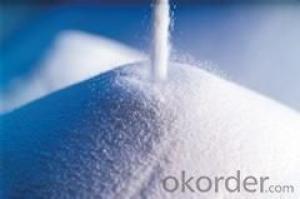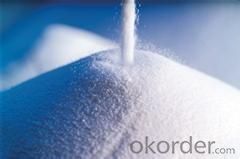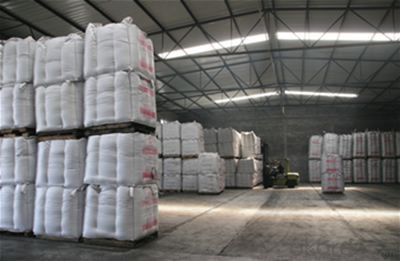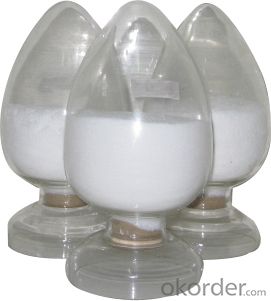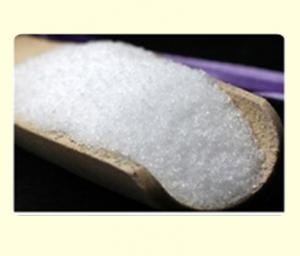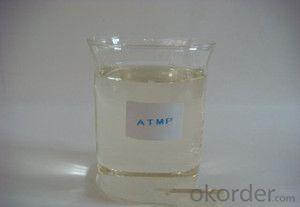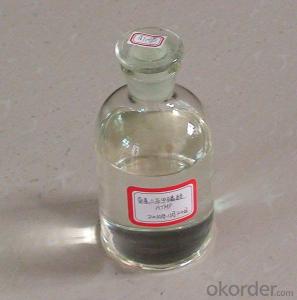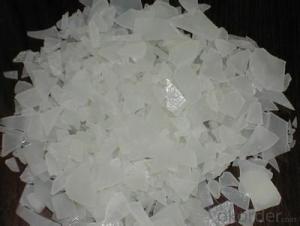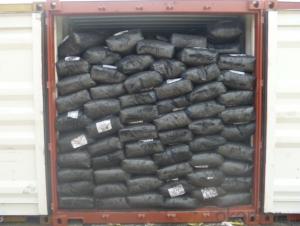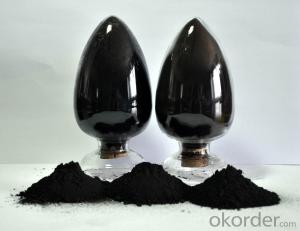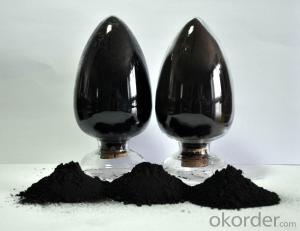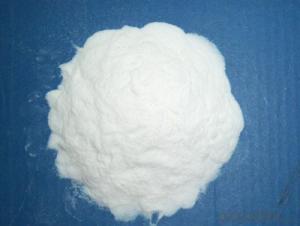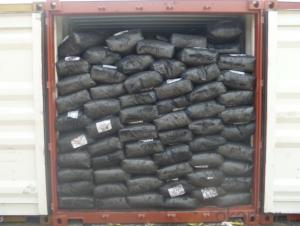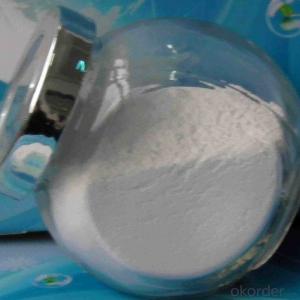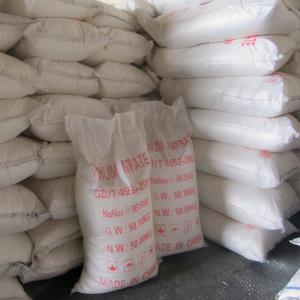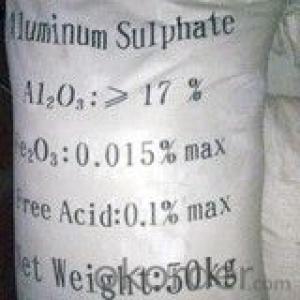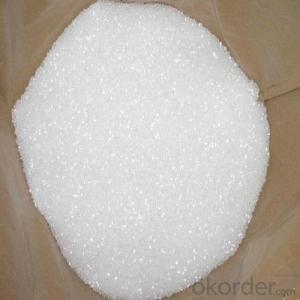White Carbon Black The Fumed Silica
- Loading Port:
- Tianjin
- Payment Terms:
- TT OR LC
- Min Order Qty:
- -
- Supply Capability:
- 10000MT m.t./month
OKorder Service Pledge
OKorder Financial Service
You Might Also Like
The Fumed Silica
Product Description:
Fumed Silica
1.Used in tires, tire body, with beam layer and sidewall rubber and rubber products,Shoes Etc.
2.Product Status:White powder
Suggest for Use:
(1) M-150 type is a hydrophilic fumed silica and is a white powder of high purity.Applied in rubber and room temperature vulcanized rubber(TVR) rubber, adhesives and sealants, coatings and paint, etc.As the strengthening filler of the rubber,the rheological and thixotropic fluid control systems, adhesives, polymers, etc.; dustproof, anti-sagging, thickening; improve the free flow of powder and anti-caking characteristics of powder.
(2) M-200 type is a hydrophilic fumed silica and is a white powder of high purity.Applied in coatings and paints, unsaturated polyester resin, composite resin and gel coats,elastomer, particularly rubber and RTV rubber, adhesives and sealants, printing inks, cable compounds, plant protection, food and cosmetics.As the strengthening filler of the rubber,the rheological and thixotropic fluid control systems, adhesives, polymers, etc.; dustproof, anti-sagging, thickening; improve the free flow of powder and anti-caking characteristics of powder,high transparency etc.
(3) M-300 type is a hydrophilic fumed silica and is a white powder of high purity.Applied in paints and coatings, silicon rubber and other elastomers, compounds and unsaturated polyester resins, adhesives and sealants, printing inks, etc.As the strengthening filler of the rubber,the rheological and thixotropic fluid control systems, adhesives, polymers, etc.; dustproof, anti-sagging, thickening; improve the free flow of powder and anti-caking characteristics of powder.It has excellent transparency in term of unsaturated polyester resin.
(4) M-380 type is a hydrophilic fumed silica and is a white powder of high purity. Applied in paints and coatings, silicon rubber and other elastomers, cable material and unsaturated polyester resins, adhesives and sealants, printing inks, etc.It can be used as reinforcing material for elastomers; rheology and thixotropy auxiliaries; dustproof, anti-sagging, thickening; It could enhance the free flow of powder and anti-caking; It has excellent transparency in term of unsaturated polyester resin.
TDS of the Fumed Silica Standard: GB3778-2003
Product Varieties | M-150 | M-200 | M-300 | M-380 | Test Method |
Nsa Surface Area(m2/kg)(BET)m2/g
| 150±30 | 200±30 | 300±30 | 380±30 | GB/T20020-2005 |
Suspension of pH value (4%) | 3.6~4.5 | 3.6~4.5 | 3.6~4.5 | 3.6~4.5 | ISO787-9 |
Loss on drying (dry 2H under the condition of 105 ℃) % | ≤1.5 | ≤1.5 | ≤1.5 | ≤1.5 | ISO787-2 |
Loss on ignition (1000 ℃ calcination for 2 hours based on105 ℃ drying after drying for 2 hours) % | ≤2.5 | ≤2.5 | ≤2.5 | ≤2.5 | ISO3262-1 |
45um sieve residue % | ≤0.05 | ≤0.05 | ≤0.05 | ≤0.05 | ISO787-18 |
Silica Content%(based on calcined products ) | ≥99.8 | ≥99.8 | ≥99.8 | ≥99.8 | ISO3262-20 |
Apparent density(based on105 ℃ after drying for 2 hours) g/L | 25~60 | 25~60 | 25~60 | 25~60 | ISO787-11 |
Carbon content(based on105 ℃ after drying for 2 hours) % | ≤0.2 | ≤0.2 | ≤0.2 | ≤0.2 | ISO3262-20 |
Safety:
As a matter of good industrial hygiene, gloves and safety glasses with side shields or better eye protection should be worn when handing Carbon Black ,For more information, refer to the MSDS.
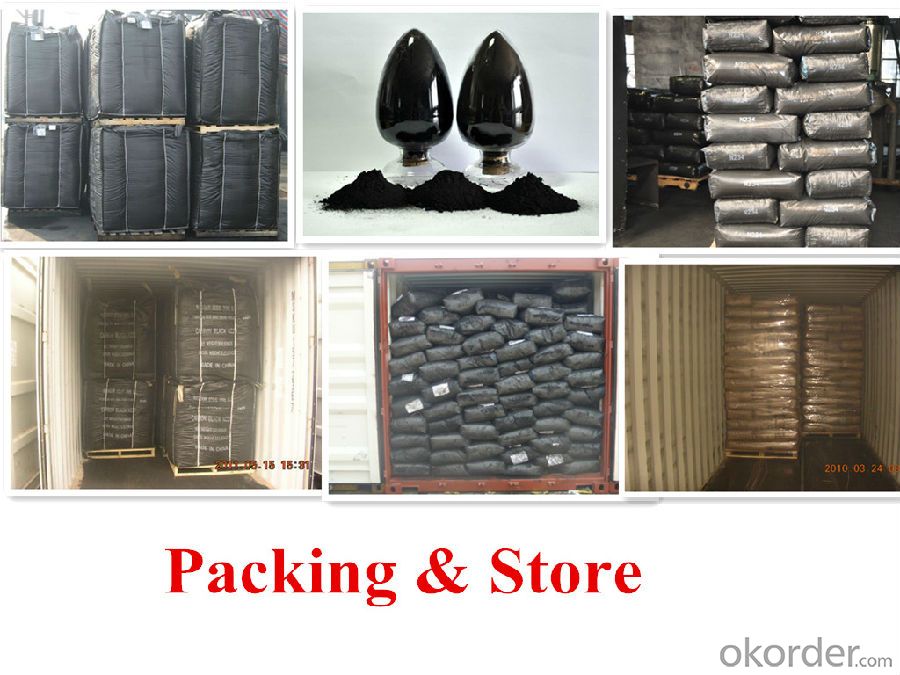
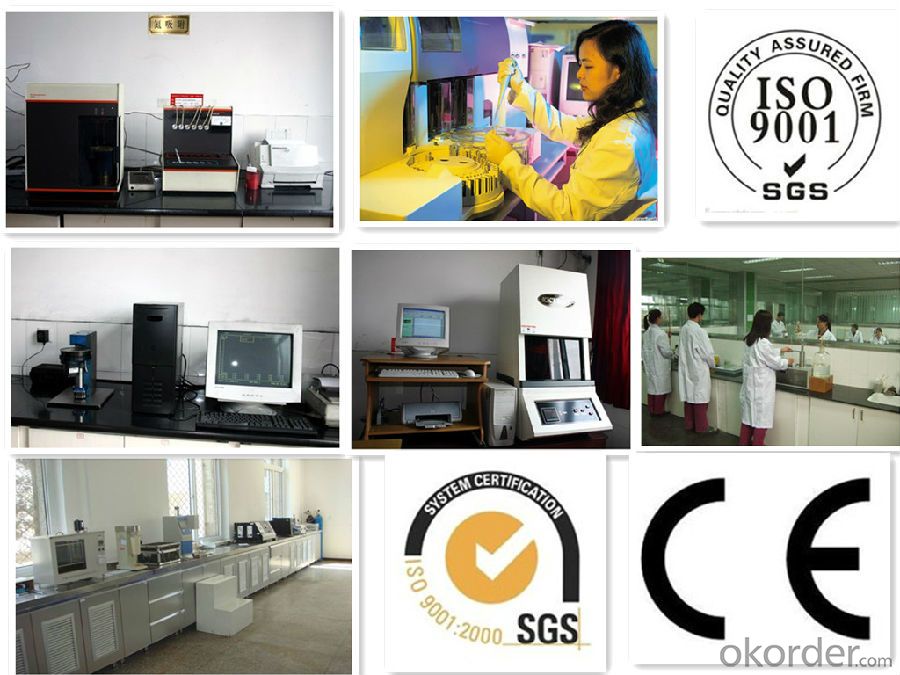
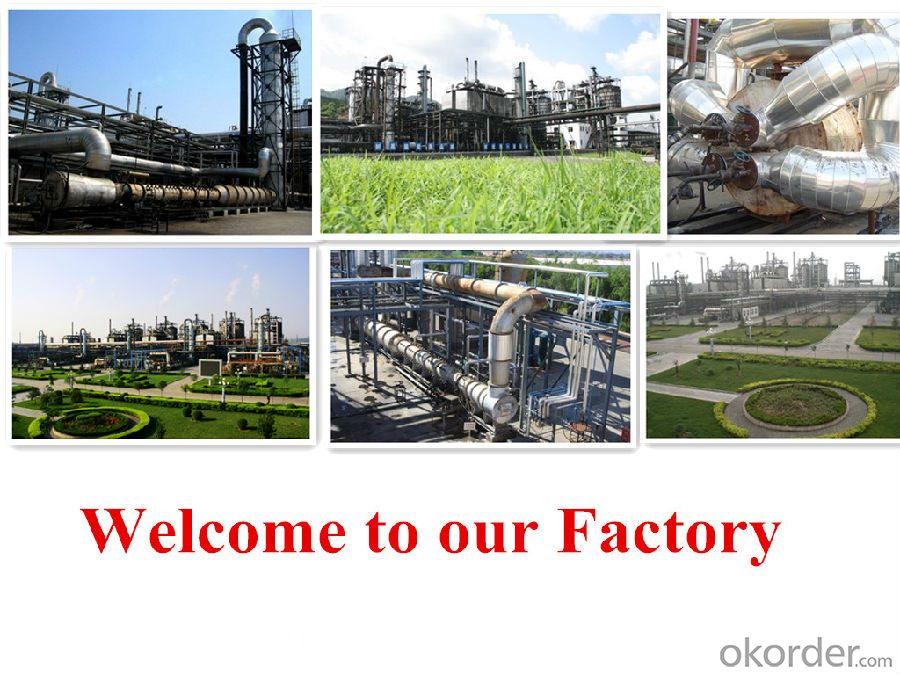
- Q: Which branch of chemistry or what specialty can study the catalyst
- Organic Chemistry: Application of Inorganic Catalysts in Organic Reactions, Preparation and Application of Organic Catalysts (such as Macromolecular Resins, Phase Transfer Catalysts), Preparation and Application of Catalysts for Organic Compounds
- Q: What is the principle of catalyst reaction rate in chemical reactions?
- Whether the chemical reaction can be carried out according to the change of free energy, but only according to the change of free energy can not determine whether the reaction can be completed, because the chemical reaction is also completed by the reaction of the energy barrier, that is, if the reaction energy barrier is high, To provide some energy, across the barrier, to complete the reaction. The energy barrier is called activation energy. And the role of the catalyst is to reduce the activation energy, so that in a relatively harsh environment, chemical reaction occurs.
- Q: Always speeds the reation ratedoes not affect the reation rateundergoes a chemical changedoes not become part of the chemical changealways slows the reation rate
- Does not become part of the chemical change. I am guessing that this is a multiple guess test and the answer you are looking for is D.
- Q: Chemistry is often said that the catalyst can change the material reaction rate, rate and speed What is the difference
- The rate is only size, no direction, speed both size and direction
- Q: what is metallocene catalyst technology?
- Metallocene catalyst A transition-metal atom sandwiched between ring structures having a well-defined single catalytic site and well-understood molecular structure used to produce uniform polyolefins with unique structures and physical properties. See also Catalysis; Coordination chemistry; Coordination complexes; Metallocenes; Organometallic compound. In the early 1980s, W. Kaminsky discovered that an appropriate co-catalyst activated metallocene compounds of group 4 metals, that is, titanium, zirconium, and hafnium, for alpha-olefin polymerization, attracting industrial interest. This observation led to the synthesis of a great number of metallocene compounds for the production of polymers already made industrially, such as polyethylene and polypropylene, and new materials. Polymers produced with metallocene catalysts represent a small fraction of the entire polyolefin market, but experts agree that such a fraction will increase rapidly in the future. See also Polymer; Polymerization; Polyolefin resins.
- Q: The properties of scandium
- Sci-Scandium (Sc) Basic knowledge Introduction In 1879, Swedish chemistry professor Nelson (LFNilson, 1840 ~ 1899) and Clive (PTCleve, 1840 ~ 1905) were almost simultaneously in rare mineral silica beryllium yttrium and black The mine found a new element. They named this element "Scandium" (scandium), ...
- Q: The concept of catalyst in high school chemistry
- Since the catalyst can only change the chemical reaction rate, the catalyst can not increase the mass of the product. The quality of the product depends only on the quality of the reactants.
- Q: Chemical equation if there is a catalyst and heating, which write in the equal sign above, which written in the following? Tomorrow academic level test, solution
- At the same time, the catalyst is written on, and the heating symbol is written under the equal sign. Only one is written on the equal sign
- Q: Can manganese dioxide do any catalyst for chemical reactions?
- The catalyst is involved in the reaction during the reaction and is reduced to the original composition after the reaction is completed. For example: heating decomposition of potassium permanganate when adding potassium permanganate. Potassium permanganate decomposition process, potassium permanganate is involved in the reaction, the specific way is not clear. And finally appeared with potassium permanganate. Reaction before and after the catalyst morphology changes, particles become powder, powder particles and so on.
- Q: Why extract the genome, the digestion is always not cut
- The enzyme, like the general catalyst, only catalyzes the thermodynamics of the permissible chemical reaction, shortening the time to reach the chemical equilibrium without changing the equilibrium point. The enzyme as a catalyst has no qualitative and quantitative changes before and after the chemical reaction. The mechanism of action of enzymes and general catalysts is to reduce the activation energy of the reaction.
Send your message to us
White Carbon Black The Fumed Silica
- Loading Port:
- Tianjin
- Payment Terms:
- TT OR LC
- Min Order Qty:
- -
- Supply Capability:
- 10000MT m.t./month
OKorder Service Pledge
OKorder Financial Service
Similar products
Hot products
Hot Searches
Related keywords
